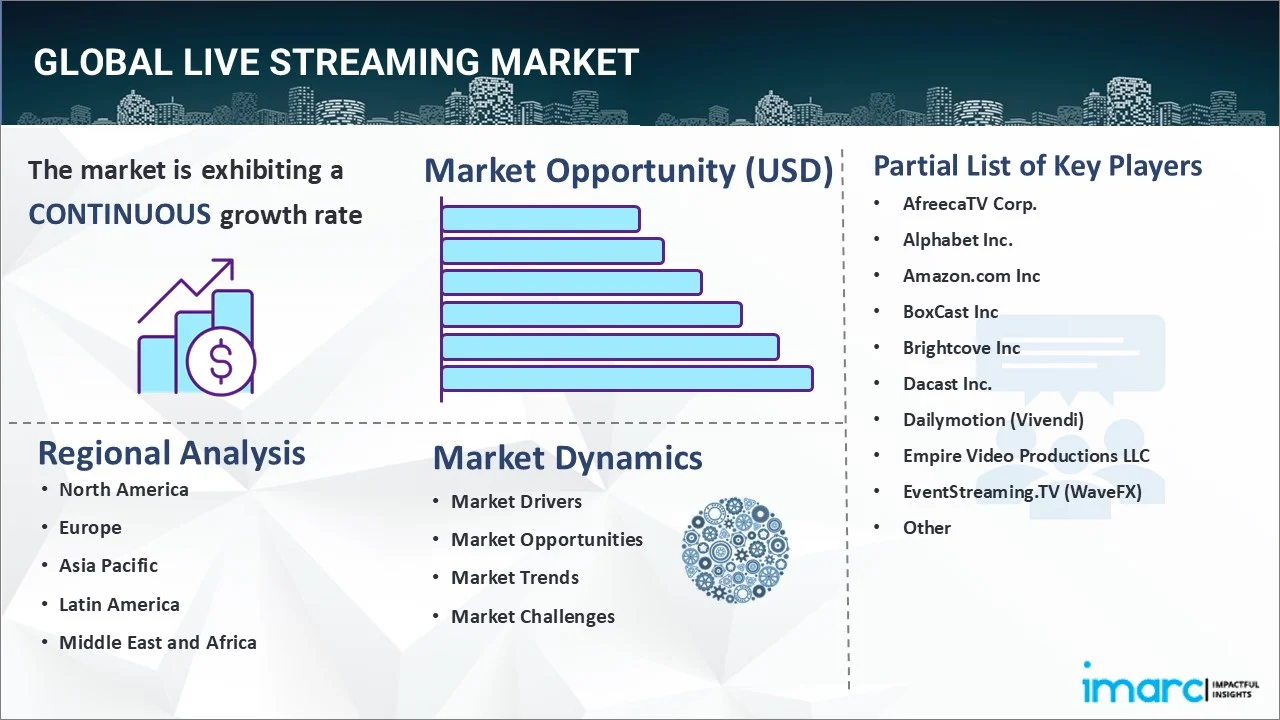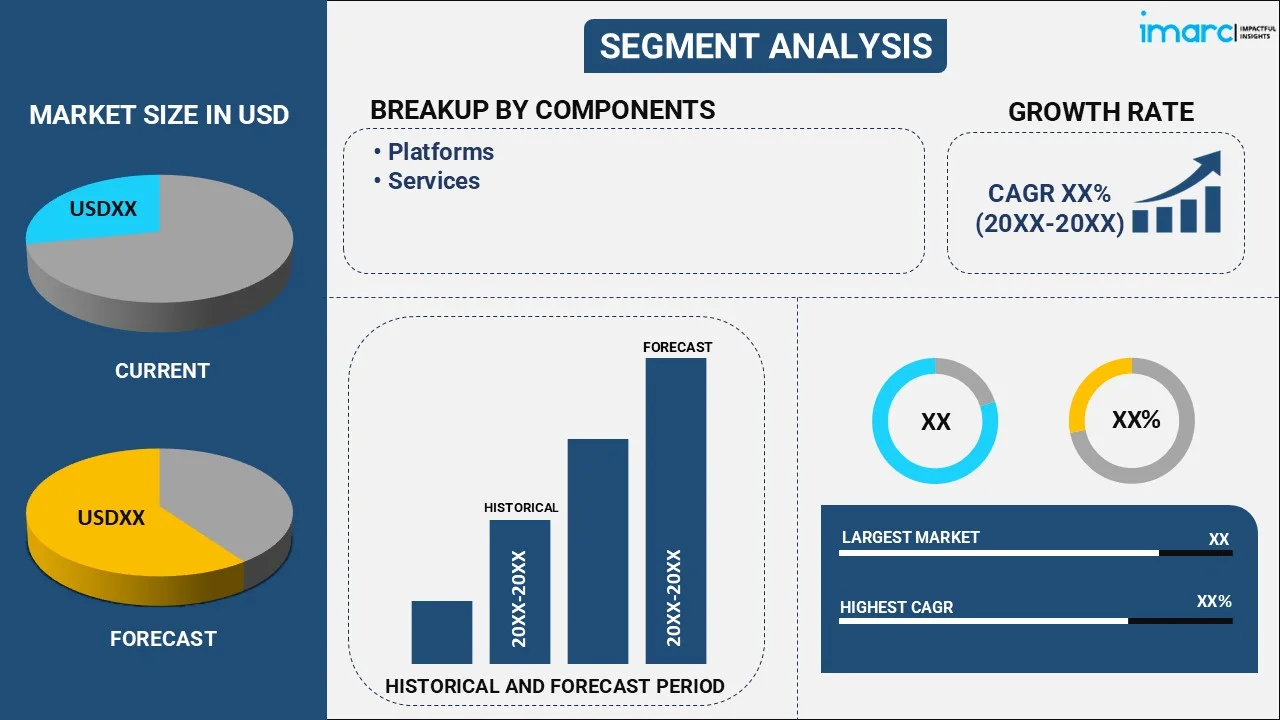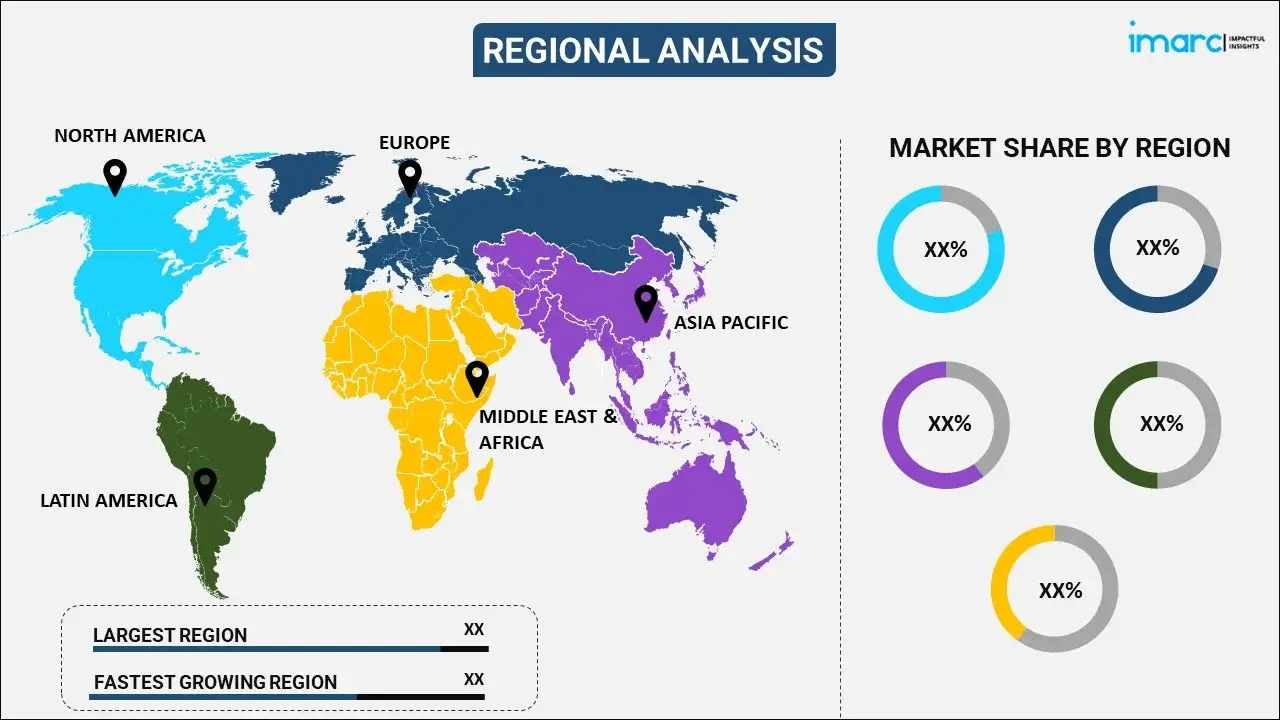
Live Streaming Market Report by Component (Platforms, Services), End User (Media and Entertainment, Education, Events, Retail, Government, and Others), and Region 2025-2033
Market Overview:
The global live streaming market size reached USD 87.8 Billion in 2024. Looking forward, IMARC Group expects the market to reach USD 605.2 Billion by 2033, exhibiting a growth rate (CAGR) of 23.93% during 2025-2033. The penetration of high-speed internet connectivity, an increase in the popularity of social media platforms among the masses, and inflating disposable incomes in developing nations are some of the major factors propelling the market.
|
Report Attribute
|
Key Statistics
|
|---|---|
|
Base Year
|
2024 |
|
Forecast Years
|
2025-2033
|
|
Historical Years
|
2019-2024
|
| Market Size in 2024 | USD 87.8 Billion |
| Market Forecast in 2033 | USD 605.2 Billion |
| Market Growth Rate (2025-2033) | 23.93% |
Live streaming is the process of broadcasting or transmitting real-time audio and video content over the internet, allowing viewers to access and experience events as they happen. It provides the means possible for individuals, businesses, and organizations to interact and engage with their audiences globally in real-time. By employing cameras, microphones, and other recording devices to capture video and audio, live streaming entails encoding the material and sending it instantly over the internet. Through live chat, comments, and other real-time communication tools, viewers may interact with the content producers as well as other viewers.

The rising accessibility and affordability of high-speed internet connections will stimulate the growth of the live streaming market. With faster internet speeds, viewers can seamlessly stream live events, sports matches, concerts, and more from the comfort of their homes or on the go, which is acting as another growth-inducing factor. Furthermore, the widespread adoption of smartphones and mobile devices has made live streaming more convenient and accessible to a larger audience, propelling the market. In line with this, it has revolutionized the world of entertainment, allowing artists, musicians, and performers to reach their fans directly and showcase their talents in real-time. This is also contributing to the market. Additionally, the COVID-19 pandemic has further accelerated the demand for live streaming as physical gatherings and events were restricted, leading to an increased reliance on virtual experiences.
Live Streaming Market Trends/Drivers:
Advancements in mobile technology
The widespread adoption of smartphones and the advancements in mobile technology have been crucial in driving the popularity of live streaming. Users are able to readily access live streaming platforms from anywhere, at any time, as smartphones become increasingly accessible and capable of processing high-quality video streaming. Additionally, mobile technology has become increasingly powerful and affordable, enabling the masses to access live streaming services is significantly supporting the market. Also, the widespread availability of high-speed mobile internet connections, including 4G and 5G networks, has further enhanced accessibility, allowing users to stream content from anywhere at any time, which is acting as a growth-inducing factor.
Social media integration with live streaming services
Social networking sites have incorporated live streaming capabilities into their already-existing platforms, providing consumers a seamless viewing experience. Its adoption and engagement have been influenced by numerous platforms such as Facebook Live, Instagram Live, and YouTube Live by utilizing their already-existing user bases. The integration of live streaming services with social media platforms has made it easier for content creators to reach a larger audience and has facilitated real-time interactions and engagement, which is acting as a growth-inducing factor. Furthermore, this facilitates cross-promotion and collaboration among content creators. Streamers can leverage their existing social media presence to promote their live streams, while influencers or celebrities on social media can use their platforms to promote live stream events or collaborations. This synergy between social media and live streaming helps build partnerships and expand the reach of live streams.
Innovations in live streaming technology
The watching experience has been greatly improved by improvements in live streaming technologies, including better visual quality, lower latency, and improved user interfaces. The accessibility, immersion, and seamlessness of live streaming have all been improved by technologies such as adaptive bitrate streaming, cloud-based transcoding, and virtual reality (VR) streaming. These developments have extended the use of live streaming across several industries, including gaming, entertainment, education, and e-commerce, attracting more viewers and content producers to participate in it, and impacting the market. Additionally, the advent of cloud-based streaming solutions has revolutionized the live streaming market by providing scalable and cost-effective infrastructure for content delivery. These services offload the technical complexities of encoding, transcoding, and distributing live streams to the cloud, allowing content creators to focus on their core activities.
Live Streaming Industry Segmentation:
IMARC Group provides an analysis of the key trends in each segment of the global live streaming market report, along with forecasts at the global, regional, and country levels from 2025-2033. Our report has categorized the market based on component and end user.
Breakup by Component:

- Platforms
- Services
Services dominate the live streaming market
The report has provided a detailed breakup and analysis of the live streaming market based on the component. This includes platforms and services. According to the report, services represented the largest segment.
The changing traditional media consumption patterns, with consumers increasingly preferring personalized and interactive content are driving the demand for services. Live streaming provides a unique opportunity for real-time engagement, enabling viewers to interact with content creators, ask questions, provide feedback, and participate in live events. This shift in consumer preferences has fueled the demand for live streaming services.
In addition, the growing popularity of live streaming services as they offer various avenues for monetization, including advertising, sponsorship deals, subscriptions, and virtual goods sales. Content creators can generate revenue by partnering with brands, attracting sponsorships, and building a loyal fan base. The potential for monetization has attracted individuals and organizations to enter the live streaming industry, further driving the market growth. The convenience and accessibility of live streaming have made it an essential component of the remote communication and event industry, propelling the market.
Breakup by End User:
- Media and Entertainment
- Education
- Events
- Retail
- Government
- Others
Media and entertainment represents the leading end user segment in the live streaming market
A detailed breakup and analysis of the live streaming services market based on the end user has also been provided in the report. This media and entertainment, education, events, retail, government, and others. According to the report, media and entertainment accounted for the largest market share.
The demand for live streaming content in the media and entertainment sector is continually increasing. Viewers are continuously seeking live coverage of major events, breaking news, sports matches, and exclusive performances. Live streaming meets this demand by offering a sense of immediacy by allowing viewers to experience events in real-time, which is positively influencing this market segment.
On the other hand, the COVID-19 pandemic has propelled the adoption of remote learning across the globe, which is providing a boost to the demand for live streaming across educational institutions. Also, it delivers real-time virtual classrooms, lectures, and interactive sessions to students, allowing them to access quality education from anywhere, regardless of physical location is driving market growth in this segment.
Furthermore, the widespread utilization of live streaming services across the government sector improves transparency and accountability as these factors are becoming more and more important to government organizations. Government agencies are increasingly focused on transparency and accountability in their operations. Live streaming provides a way for governments to communicate and engage with the public in real-time, allowing citizens to witness government proceedings, public meetings, and events.
Breakup by Region:

- North America
- United States
- Canada
- Europe
- Germany
- France
- United Kingdom
- Italy
- Spain
- Others
- Asia Pacific
- China
- Japan
- India
- South Korea
- Australia
- Indonesia
- Others
- Latin America
- Brazil
- Mexico
- Others
- Middle East and Africa
Asia Pacific exhibits a clear dominance, accounting for the largest live streaming services market share
The report has also provided a comprehensive analysis of all the major regional markets, which include North America (the United States and Canada); Europe (Germany, France, the United Kingdom, Italy, Spain, and others); Asia Pacific (China, Japan, India, South Korea, Australia, Indonesia, and others); Latin America (Brazil, Mexico, and others); and the Middle East and Africa.
Asia Pacific held the biggest market share due to the region’s rich cultural diversity, with multiple languages and diverse content preferences. Live streaming platforms cater to this diversity by offering a wide range of content in different languages, including regional music, entertainment, and cultural events, attracting audiences from various backgrounds, which is also favoring the market.
On the other hand, North America is estimated to expand further in this domain during the forecast period since the region has a presence of large number of leading players, such as Netflix, Inc., Amazon.com, Inc., and Alphabet Inc. Additionally, the rising number of users for video gaming and video-on-demand platforms across the United States and Canada is also impacting the market. Furthermore, Esports and online gaming have gained significant traction in the United States, attracting a large and dedicated fan base.
Competitive Landscape:
The global live streaming market is experiencing steady growth across the globe with the rise of remote work and virtual collaboration. With companies and individuals relying on online meetings, webinars, and virtual events, there is a growing need for reliable and feature-rich live streaming platforms. Companies are developing platforms that enhance virtual communication, offer interactive features, and provide seamless integration with popular conferencing tools. The market is also witnessing a considerable increase in research and development initiatives as well as the advent of platforms and applications that enable live streaming of VR/AR content, creating immersive and interactive experiences for users. Companies are leveraging live streaming for corporate events, internal communications, and training sessions, positively influencing the market.
The report has provided a comprehensive analysis of the competitive landscape in the global live streaming market. Detailed profiles of all major companies have also been provided. Some of the key players in the market include:
- AfreecaTV Corp.
- Alphabet Inc.
- Amazon.com Inc
- BoxCast Inc
- Brightcove Inc
- Dacast Inc.
- Dailymotion (Vivendi)
- Empire Video Productions LLC
- EventStreaming.TV (WaveFX)
- Flux Broadcast
- International Business Machines Corporation
- Meta Platforms Inc
- Microsoft Corporation
Live Streaming Market Report Scope:
| Report Features | Details |
|---|---|
| Base Year of the Analysis | 2024 |
| Historical Period | 2019-2024 |
| Forecast Period | 2025-2033 |
| Units | Billion USD |
| Scope of the Report | Exploration of Historical and Forecast Trends, Industry Catalysts and Challenges, Segment-Wise Historical and Predictive Market Assessment:
|
| Components Covered | Platforms, Services |
| End Users Covered | Media and Entertainment, Education, Events, Retail, Government, Others |
| Regions Covered | Asia Pacific, Europe, North America, Latin America, Middle East and Africa |
| Countries Covered | United States, Canada, Germany, France, United Kingdom, Italy, Spain, China, Japan, India, South Korea, Australia, Indonesia, Brazil, Mexico |
| Companies Covered | AfreecaTV Corp., Alphabet Inc., Amazon.com Inc, BoxCast Inc, Brightcove Inc, Dacast Inc., Dailymotion (Vivendi) Empire Video Productions LLC, EventStreaming.TV (WaveFX), Flux Broadcast, International Business Machines Corporation, Meta Platforms Inc, Microsoft Corporation, etc. |
| Customization Scope | 10% Free Customization |
| Post-Sale Analyst Support | 10-12 Weeks |
| Delivery Format | PDF and Excel through Email (We can also provide the editable version of the report in PPT/Word format on special request) |
Key Benefits for Stakeholders
- IMARC’s report offers a comprehensive quantitative analysis of various market segments, historical and current market trends, market forecasts, and dynamics of the live streaming market from 2019-2033.
- The research study provides the latest information on the market drivers, challenges, and opportunities in the global live streaming market.
- The study maps the leading, as well as the fastest-growing, regional markets. It further enables stakeholders to identify the key country-level markets within each region.
- Porter's five forces analysis assist stakeholders in assessing the impact of new entrants, competitive rivalry, supplier power, buyer power, and the threat of substitution. It helps stakeholders to analyze the level of competition within the live streaming industry and its attractiveness.
- Competitive landscape allows stakeholders to understand their competitive environment and provides an insight into the current positions of key players in the market.
Key Questions Answered in This Report
The live streaming market reached USD 87.8 Billion in 2024.
The live streaming market is projected to exhibit a CAGR of 23.93% during 2025-2033, reaching a value of USD 605.2 Billion by 2033.
Growth in the live streaming market is driven by widespread high-speed internet, increased social media use, and rising disposable incomes in developing regions. This has led to more content consumption, greater creator engagement, and a strong shift toward digital entertainment over traditional broadcasting models.
Asia Pacific exhibits a clear dominance, accounting for the largest live streaming services market share.
Some of the major players in the global live streaming market include AfreecaTV Corp., Alphabet Inc., Amazon.com Inc, BoxCast Inc, Brightcove Inc, Dacast Inc., Dailymotion (Vivendi), Empire Video Productions LLC, EventStreaming.TV (WaveFX), Flux Broadcast, International Business Machines Corporation, Meta Platforms Inc, and Microsoft Corporation.
Need more help?
- Speak to our experienced analysts for insights on the current market scenarios.
- Include additional segments and countries to customize the report as per your requirement.
- Gain an unparalleled competitive advantage in your domain by understanding how to utilize the report and positively impacting your operations and revenue.
- For further assistance, please connect with our analysts.
 Request Customization
Request Customization
 Speak to an Analyst
Speak to an Analyst
 Request Brochure
Request Brochure
 Inquire Before Buying
Inquire Before Buying




.webp)




.webp)












